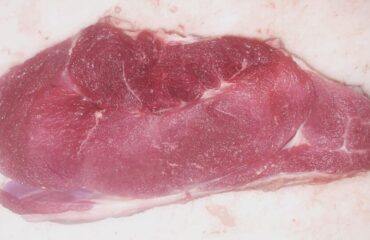
Did I butcher an animal for you? Did you receive back a little bag marked “Caul Fat”? Are you as confused as ever? Let me explain!
Caul fat goes by many different names; its technical name is the “greater omentum,” but it can also be referred to as fat netting, mesentery, lace fat, crépine (French), or ragnatela (Italian). While it doesn’t make a great fat for rendering or cooking, like kidney fat (lard) or back fat, it’s perfect for wrapping pâtés, meatloaf, meatballs, sausages, or roasts to keep them moist while they cook.
Caul Fat can withstand high temperatures. During cooking, the caul fat slowly renders out, basting the meat with fat, keeping it from drying out, and adding an extra layer of richness. Despite the fact that it surrounds the digestive organs, caul fat doesn’t have an unpleasant or “organy” flavor at all.
Tell us how you use your Caul Fat!





